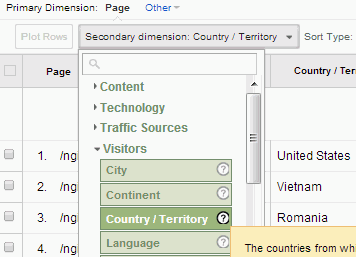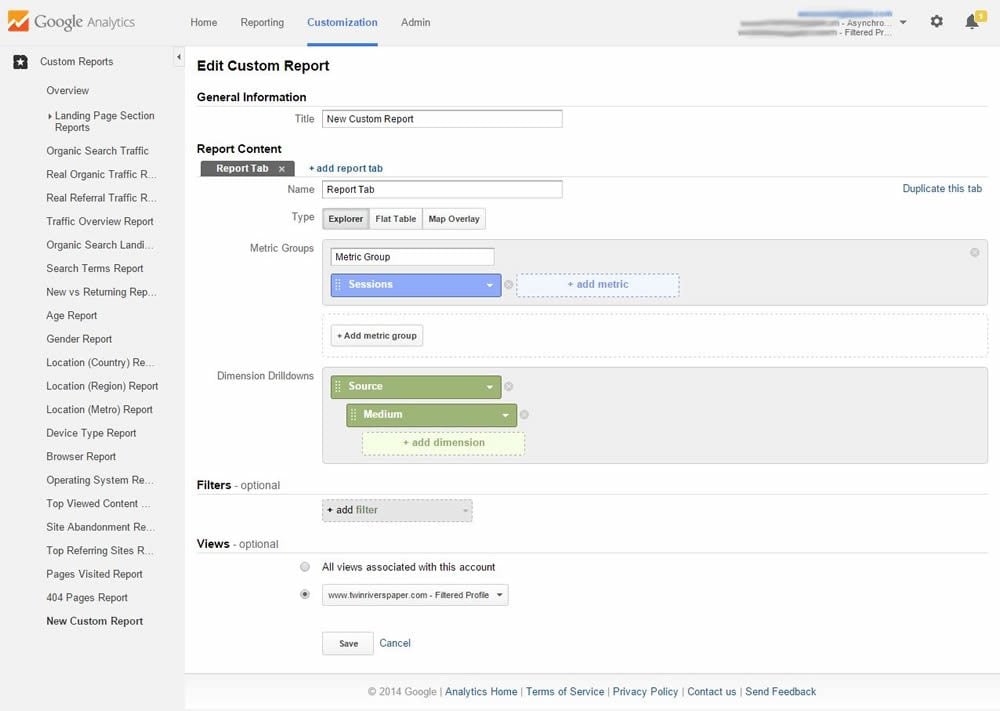Gain Comprehensive Perspectives With Secondary Measurement in Google Analytics
Secondary dimensions in Google Analytics act as an effective device for boosting the deepness of insights acquired from information evaluation. Keep tuned to find just how secondary measurements can revolutionize your data analysis and drive notified decision-making in the digital realm.
Recognizing Additional Dimensions in GA
The concept of secondary measurements in Google Analytics boosts information analysis by giving added insights right into primary metrics. Additional measurements permit individuals to dive much deeper into their data by including an extra layer of information to the main data being assessed. By incorporating second measurements, individuals can sector and contrast information throughout various measurements, such as web traffic resources, individual gadgets, geographic places, and extra. This added degree of granularity enables a much more comprehensive understanding of individual actions and site efficiency.
Recognizing how to successfully use second dimensions in Google Analytics is essential for drawing out beneficial insights from the information collected. By picking the appropriate second measurements to enhance main metrics, customers can reveal patterns, fads, and correlations that may have or else gone unnoticed. This much deeper level of analysis can result in more educated decision-making and the optimization of digital marketing methods to enhance overall efficiency.
Advantages of Making Use Of Secondary Dimensions
Checking out the advantages fundamental in leveraging secondary measurements within Google Analytics illuminates the deepness of understandings readily available for improving information evaluation. By integrating secondary measurements, customers can gain a much more extensive understanding of their main information metrics.
Moreover, additional dimensions enable customers to contrast and contrast various information points within the exact same record, providing an extra holistic view of internet site efficiency. This relative evaluation can clarify the performance of advertising projects, material involvement, or user demographics. In addition, making use of secondary measurements can aid in determining outliers or abnormalities that may require more investigation.
In significance, leveraging second dimensions in Google Analytics provides an effective device for extracting important insights and enhancing data-driven decision-making processes.
Executing Additional Dimensions Effectively
To properly execute secondary dimensions in Google Analytics, planning the choice and application of these added data layers is paramount for making the most of the depth of understandings acquired from analytics records. When selecting additional dimensions, take into consideration the certain goals of your evaluation to guarantee the selected measurements straighten with the details required to answer essential concerns. It's crucial to focus on significance over amount, selecting dimensions that match the main measurement and offer meaningful context.
Additionally, recognizing the connection between the main and additional measurements is crucial. This comprehension allows you to analyze the information accurately and draw workable final thoughts. When analyzing information only based on the key dimension, implementing secondary dimensions successfully entails using them to discover patterns, patterns, and connections that might not be apparent - Secondary Dimension in Google Analytics. By incorporating secondary dimensions thoughtfully, you can improve the granularity of your analysis and gain deeper insights into user behavior, content performance, and other crucial metrics within Google Analytics.
Analyzing Data With Additional Measurements
Using second measurements in information evaluation provides a nuanced viewpoint that uncovers intricate partnerships and patterns within Google Analytics records. By integrating secondary measurements along with key dimensions, analysts can dig deeper right into the data to remove valuable understandings. This method makes it possible for the identification of connections that may not be promptly apparent when evaluating data only based on key measurements.
When examining data with additional dimensions in Google Analytics, it is necessary to consider the particular metrics or dimensions that will offer the most purposeful context for the key dimension being examined. Pairing the main measurement of 'website traffic resource' with secondary measurements such as 'device group' or 'landing Homepage web page' can offer a more extensive understanding of individual habits and preferences.
Furthermore, the ability to section data utilizing second dimensions allows for an extra granular examination of user communications, assisting in the optimization of advertising and marketing approaches, web site performance, and overall customer experience. By leveraging additional dimensions successfully, services can make informed decisions based on a comprehensive analysis of their Google Analytics information.
Ideal Practices for Second Measurements
When applying additional measurements in Google Analytics, accuracy in picking relevant metrics is critical for acquiring workable insights from the data analysis procedure. Among the most effective practices for utilizing secondary dimensions properly is to straighten them with your primary dimension to get an extra detailed understanding of your website or campaign performance. For instance, if your primary dimension is 'Source/Medium,' coupling it with second measurements like 'Device Category' or 'Landing Page' can give insights into just how different devices or touchdown pages effect website traffic from numerous sources.

Frequently try out various combinations of second and key dimensions can help you uncover new connections and fads within your data, allowing you to optimize your strategies and boost overall efficiency (Secondary Dimension in Google Analytics). By complying with these finest methods, you can take advantage of secondary dimensions in Google Analytics properly to get deeper insights and make data-driven decisions that positively affect your business

Verdict
In verdict, secondary measurements look at this site in Google Analytics supply a valuable opportunity to acquire much deeper understandings right into primary information metrics. By including a secondary measurement to reports, services can reveal relationships, trends, and patterns that might not be immediately evident, resulting in a more detailed understanding of individual actions and communications on an internet site. Implementing second measurements properly and analyzing information with them can aid organizations make data-driven choices and maximize their on-line efficiency.
By including second dimensions, users can sector and compare data throughout various measurements, such as traffic sources, customer devices, geographic places, and extra. Executing second measurements effectively involves utilizing them to uncover patterns, patterns, and relationships that might not be apparent when evaluating information only based my site on the primary dimension. By including second measurements along with primary measurements, experts can delve much deeper right into the information to draw out beneficial insights. One of the best methods for making use of secondary measurements effectively is to straighten them with your primary measurement to acquire an extra detailed understanding of your internet site or project performance. If your main dimension is 'Source/Medium,' pairing it with second measurements like 'Gadget Classification' or 'Touchdown Page' can provide insights into just how different tools or landing web pages impact web traffic from various resources.